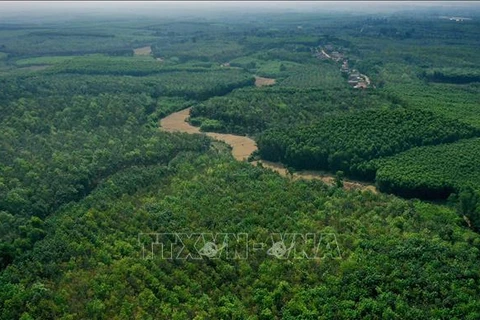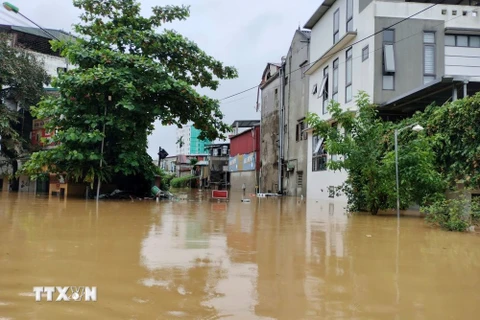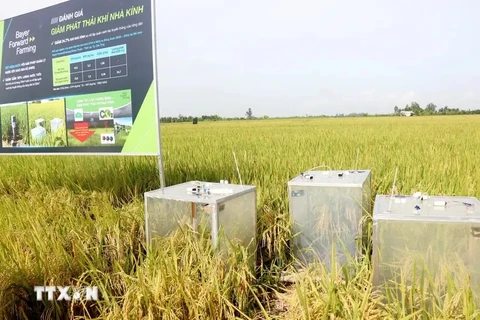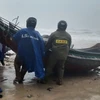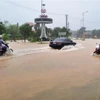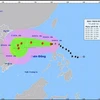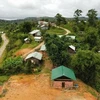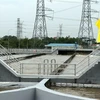
Hanoi (VNA) - The escalating impacts of climate change have made natural disasters, especially storms, increasingly unpredictable. Against this backdrop, accurate and strategic forecasting of disaster risk levels is now imperative to mitigate losses effectively and ensure sustainable coastal development.
According to the Ministry of Natural Resources and Environment (MoNRE), establishing different warning levels for natural disasters will help localities minimise impacts and overcome the consequences of natural disasters in a more reasonable and effective manner.
Vietnam's coastal provinces play a pivotal role in national socio-economic growth, yet they remain the most affected by extreme weather events. Over recent years, major storms, including Washi (2005), Damrey (2005), Kalmaegi (2014), Doksuri (2017), and Vamco (2020), have caused widespread flooding and extensive damage in coastal areas, particularly when they coincided with high tides, leading to dike breaches and severe inundations.
According to Dr. Nguyen Quoc Khanh, Deputy Director of the Institute of Hydrometeorology and Climate Change, climate change and rising sea levels also tend to increase in frequency, duration and intensity, worsening coastal erosion, saltwater intrusion, and flooding. A 2020 climate change scenario predicted that a 100cm rise in sea level could submerge 30-80% of the Mekong Delta and 20-40% of the Red River Delta, affecting millions of residents and critical infrastructure.
A study conducted by World Bank and Global Facility for Disaster Reduction and Recovery in 2020 estimated that approximately 11.8 million people in Vietnam's coastal areas would be directly affected by floods, with potential economic loss of 1 million USD in agricultural GDP. In addition, 42% of coastal hotels are located in landslide areas, half of industrial zones are at risk of being affected by major floods and 22% of schools and 26% of medical facilities are at risk of being affected by major flooding.
Dr. Khanh emphasizes the necessity of a comprehensive strategy to forecast disaster risks at varying levels. Such an approach would provide a foundation for preventive measures, emergency responses, and post-disaster recovery.
He said it is crucial to tailor risk assessments to local conditions. “At the same height, the risk levels due to sea level rise for coastal areas will be different depending on local factors such as terrain, infrastructure, resilience and response capacity. This requires detailed building for risk levels based on local characteristics,” Khanh said.
The Institute of Hydrometeorology and Climate Change is conducting a number of ministerial and state-level projects on decentralisation and risk assessment of natural disasters in Vietnam.
It is researching and building a system to warn of the risk levels of typhoons and tropical depressions according to hydrometeorological forecasts and applying them on a trial basis in the north central region.
The IMHCC was also researching scientific and technological solutions for multi-disaster management, building support tools for coastal areas, assessing the increasing level of natural disaster risks.
"Urgent solutions to prevent natural disaster risks include improving the effectiveness of marine hydrometeorology forecasting and warning; consolidating and upgrading the sea dyke system, ensuring resilience to frequent typhoons; increasing the amount of wave-breaking trees, developing protective forests and mangrove forests at river mouths and along the coast, and preserving natural coastal sand dunes," Khanh said.

He said that to upgrade and innovate the warning system, MoNRE proposed applying advanced technologies such as AI to improve the disaster forecasting accuracy, especially for floods and landslides.
More automatic monitoring stations with new technology should be added, especially in vulnerable areas, to ensure accurate and timely data collection and a disaster warning information system should be built in.
In addition, concerned agencies needed to develop education and communication programmes on climate change and natural disaster risks to raise people's awareness of self-prevention and protective measures against natural disasters.
They must review local planning and strategies including planning on infrastructure, land use, population and natural disaster prevention, especially in areas heavily affected by recent typhoons./.

